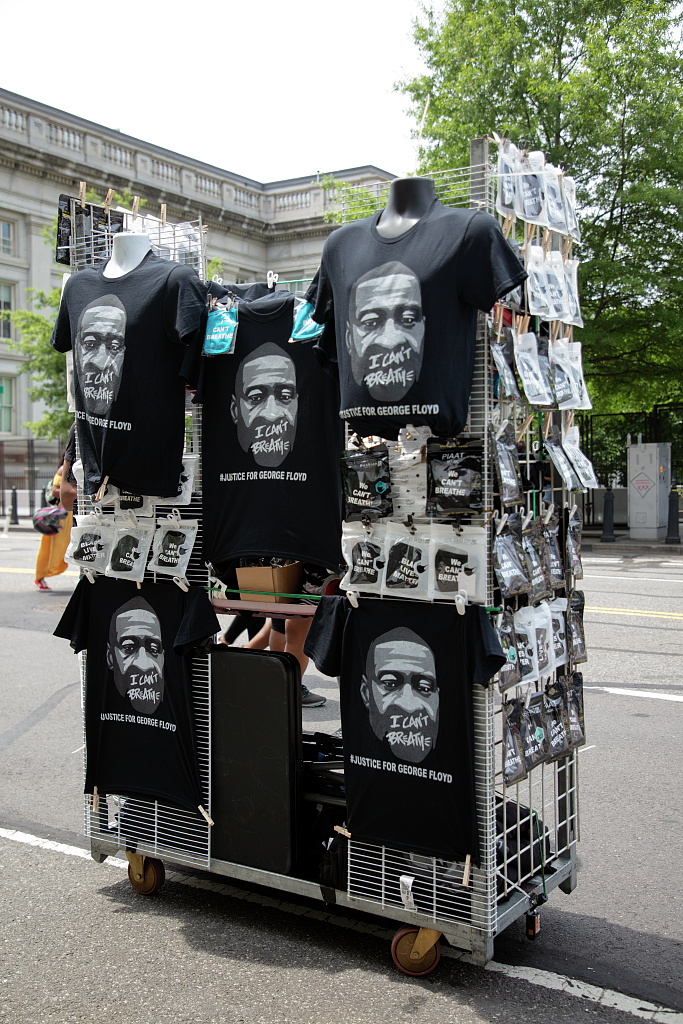Design & Activism Issue 5 2021
Solidarity, Screen-Printed
Sophie Maize

“I Can’t Breathe” t-shirts. Carol M. Highsmith, One of the many Black Lives Matter events on or near Black Lives Matter Plaza in Washington, D.C., 2020. Courtesy of the Library of Congress, LC-DIG-highsm-63715.
In early August 2020, players for the WNBA’s Atlanta Dream walked onto the court wearing not their jerseys, but black t-shirts printed with two words: “Vote Warnock.” The team’s co-owner, Kelly Loeffler, who was campaigning in a highly contested election to retain her seat in the Senate, had adamantly expressed opposition to the Black Lives Matter movement earlier in the summer.¹ Broadcasting their endorsement of both BLM and Loeffler’s opponent through their shirts, the Dream helped Democratic challenger Reverend Raphael Warnock gain momentum in the race, which he eventually won in the January run-off.
Professional basketball players have a history of using their visibility to express support for racial justice, with t-shirts being their preferred mode of communication. In 2014, Derrick Rose, soon followed by other NBA players such as LeBron James and Kobe Bryant, wore a t-shirt reading “I Can’t Breathe,” a simple but powerful reminder of the death of Eric Garner at the hands of police earlier that year.² Following the same mode of activism, WNBA teams wore “Black Lives Matter” and “Say Her Name” t-shirts throughout the summer of 2020, dedicating their season to Breonna Taylor, who was shot and killed by police in her home in Louisville, Kentucky that March, and other Black female victims of police brutality.³ Through the simple, visual medium of the t-shirt, athletes have been able to demonstrate their solidarity with those grieving and demanding change, their shirts bearing the same message as those of millions of protesters across the country.
While 2020 will undoubtedly be remembered for its political and social turmoil, it will also likely be remembered for its t-shirts. At a time when screens and social distancing mediated interactions with others, people used their clothes as a way to speak out, whether on television or in the streets. As inadequate as it may seem to define a year by such a utilitarian garment, the humble tee played an undeniable role in how we communicated our beliefs, loyalties, and cries for justice in a year of lockdowns and protests.
is a student in the History of Design and Curatorial Studies MA program at Parsons School of Design. She is interested in fashion and material culture and is a fellow at the Library of Cooper Hewitt, Smithsonian Design Museum.
Notes
- Sopan Deb, “W.N.B.A. Players Escalate Protest of Anti-B.L.M. Team Owner,” New York Times, August 4, 2020.
- Scott Cacciola, “At Nets’ Game, a Plan for a Simple Statement Is Carried Out to a T,” New York Times, December 9, 2014.
- Zach Lowe and Ramona Shelburne, “WNBA players to spotlight Breonna Taylor’s name on jerseys; ‘Say Her Name’ on warm-ups,” ESPN, July 6, 2020.
